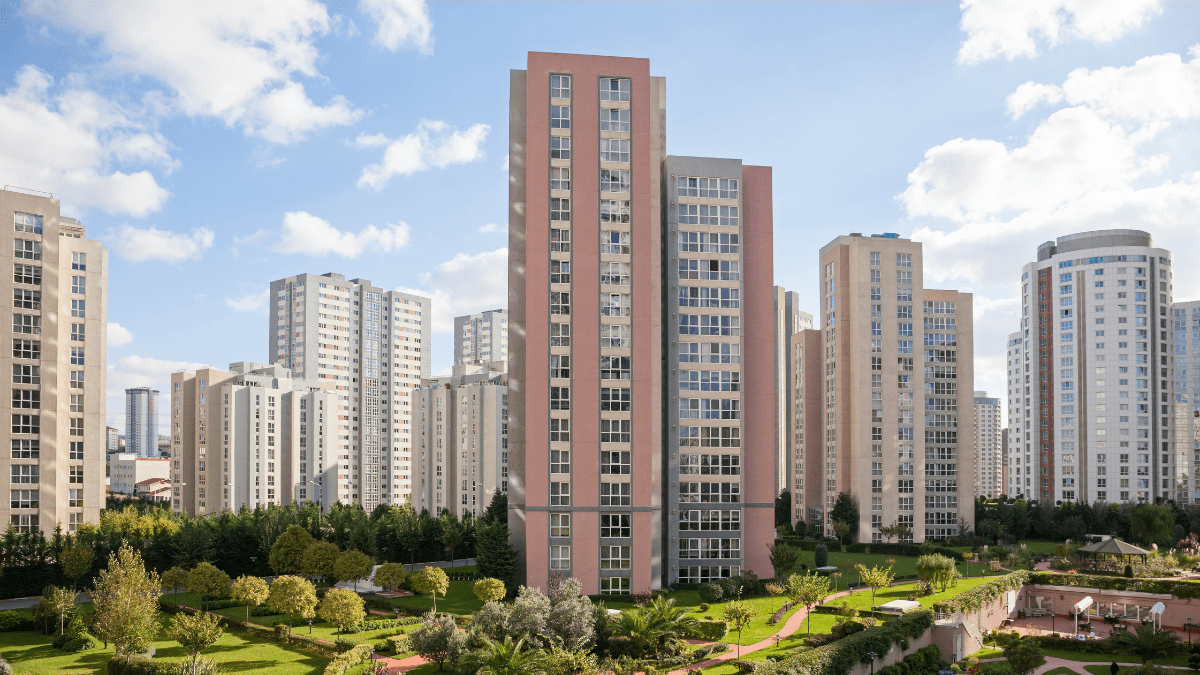
The Next Real Estate Boom: Understanding the Potential of Tier 2 Cities in India
March 20, 2024 . Real-Estate Industry . 10 min readIn recent years, the real estate landscape in India has witnessed a significant shift in focus, with Tier 2 cities emerging as hotspots for investment and development. As urbanization accelerates and infrastructure improves, these cities are becoming increasingly attractive for both investors and homebuyers. In this blog post, we’ll delve into the potential of tier 2 cities in the Indian real estate market and explore why they are poised for growth.
What are Tier 2 Cities?
In India, cities are categorized into different tiers based on various factors such as population size, infrastructure, economic development, and amenities available. Tier 1 cities typically comprise the largest and most developed urban metropolitan areas like Mumbai, Delhi, Chennai, and Kolkata. These cities are known for their advanced infrastructure, robust economies, and high standards of living.
Tier 2 cities, on the other hand, are smaller urban centers that are experiencing rapid growth and development. While they may not be as large or prosperous as tier 1 cities, they offer significant potential for investment and expansion. Examples of tier 2 cities in India include Surat, Jaipur, Lucknow and a few others. These cities are characterized by improving infrastructure, burgeoning industries, and a growing middle class population.
Tier 3 cities are smaller towns and urban centers with moderate levels of development and amenities. They often serve as regional hubs for trade, commerce, and administration. Meanwhile, tier 4 cities are the smallest urban areas with limited infrastructure and economic opportunities.
Tier 2 Cities: India’s Next Real Estate Powerhouses
As India strides towards urbanization at an accelerating pace, the spotlight is gradually shifting to tier-2 cities such as Bhubaneswar, Coimbatore, Indore, Jaipur, Kochi, Lucknow, Nagpur, Surat, Thiruvananthapuram, and Visakhapatnam. A recent report by Cushman and Wakefield, in collaboration with the Confederation of Real Estate Developers’ Associations of India (CREDAI), highlights these cities’ advantages and development potential, positioning them as promising destinations for the real estate sector. While tier-1 cities like Delhi NCR, Mumbai, Bengaluru, Pune, Hyderabad, Chennai, Kolkata, and Ahmedabad have traditionally dominated the real estate landscape, the report predicts that the tier 2 cities are poised to contribute significantly to India’s growth story.
The report provides crucial insights into India’s growth trajectory, identifying the real estate sector as a key driver. With projections indicating India’s rapid economic expansion, aiming to reach a $5.0 trillion economy by FY2026-27, there’s a pressing need to expedite our pace of growth and expand urban infrastructure. Rapid urbanization has put immense pressure on existing infrastructure in tier-1 cities, prompting investors and developers to explore new avenues.
With India’s urbanization rate expected to reach around 50 percent by 2050, tier-2 cities offer a compelling alternative, presenting lucrative opportunities for growth and investment in the real estate sector. Factors such as population, infrastructure development, talent pool, income levels, ease of living, and housing affordability have been instrumental in selecting these cities as the next real estate hotspots.
Understanding the Rise of Tier 2 Cities in India
Bhubaneswar: Known as the “Temple City of India,” Bhubaneswar boasts a rich cultural heritage and is rapidly transforming into a major educational and IT hub. With its well-planned infrastructure, including wide roads and modern amenities, Bhubaneswar attracts students, professionals, and tourists alike.
Coimbatore: Often referred to as the “Manchester of South India,” Coimbatore is renowned for its thriving textile industry and entrepreneurial spirit. The city is also emerging as a significant IT and manufacturing hub, fueled by a skilled workforce and favorable business environment.
Indore: Dubbed as the “Commercial Capital of Madhya Pradesh,” Indore is experiencing rapid industrial and commercial growth. With its strategic location, excellent connectivity, and proactive government policies, Indore has become a magnet for businesses seeking expansion opportunities in central India.
Jaipur: The vibrant capital city of Rajasthan, Jaipur, is famed for its architectural marvels, including the iconic Hawa Mahal and Amer Fort. Beyond its cultural heritage, Jaipur is witnessing substantial growth in industries like tourism, handicrafts, and information technology, making it an attractive destination for investors and entrepreneurs.
Kochi: Situated on the southwest coast of India, Kochi is a bustling port city known for its scenic beauty and historical significance. With its rapidly expanding infrastructure, including the Kochi Metro and smart city initiatives, Kochi is emerging as a prominent commercial and industrial hub in Kerala.
Lucknow: The capital city of Uttar Pradesh, Lucknow, is a blend of rich history and modern development. With its growing IT sector, thriving retail industry, and infrastructure projects like the Lucknow Metro, the city is experiencing a surge in economic activity and investment interest.
Nagpur: Located in the heart of India, Nagpur is known as the “Orange City” due to its flourishing orange orchards. Besides its agricultural prominence, Nagpur is witnessing significant industrial growth, particularly in sectors like manufacturing, logistics, and IT, positioning it as a key economic center in Maharashtra.
Surat: Recognized as the “Diamond City of India,” Surat is a major hub for diamond cutting and polishing. In addition to its diamond industry, Surat is diversifying into textiles, petrochemicals, and information technology, attracting investments and talent from across the country.
Thiruvananthapuram: The capital city of Kerala, Thiruvananthapuram, is renowned for its lush greenery, serene beaches, and rich cultural heritage. With a focus on technology and education, Thiruvananthapuram is home to Technopark, one of India’s largest IT parks, fostering innovation and entrepreneurship in the region.
Visakhapatnam: Situated along the eastern coast of India, Visakhapatnam, or Vizag, is a major port city with a burgeoning industrial sector. With its strategic location, natural harbor, and government initiatives like the Visakhapatnam-Chennai Industrial Corridor, Vizag is poised for rapid industrial and economic growth, attracting investments in sectors like shipping, pharmaceuticals, and tourism.
Top 10 Factors Fueling the Growth of Tier 2 Cities in India
Urbanization and migration: As the major metropolitan cities become increasingly overcrowded and expensive, many people are migrating to tier 2 cities in search of better job opportunities, affordable housing, and a better quality of life. This migration has fueled the growth and development of these cities.
Economic Dynamism: Tier 2 cities are experiencing robust economic growth, often exceeding rates witnessed in established metros. This growth is fueled by a diverse range of industries, including manufacturing, IT, education, and healthcare. This economic upsurge creates a ripple effect, fostering job creation, rising disposable incomes, and a burgeoning consumer base.
Cost Competitiveness: Compared to their tier 1 counterparts, tier 2 cities offer a significant cost advantage. Businesses benefit from lower operational costs, including real estate, labor, and utilities. This translates into improved profitability and enhanced competitiveness in the national and global markets.
Emerging Talent Pool: These emerging urban cities boast a burgeoning talent pool. Renowned educational institutions in these cities are producing a steady stream of skilled graduates. Additionally, the increasing focus on vocational training is creating a readily available workforce equipped with industry-specific skills. This readily available talent pool positions these emerging cities as attractive destinations for businesses seeking to expand or establish operations.
Enhanced Quality of Life: Life in tier 2 cities offers a welcome respite from the frenetic pace of metros. These cities generally experience less traffic congestion, lower pollution levels, and a more relaxed atmosphere. This improved quality of life attracts not only businesses seeking a motivated workforce but also individuals seeking a better work-life balance.
Government Initiatives: The Indian government is actively playing a pivotal role in fostering the growth of tier-2 cities. This includes substantial investments in infrastructure development, such as improved transportation networks, construction of airports, highways, reliable power supply, and robust communication networks. Additionally, government initiatives like the “Smart Cities Mission” are further propelling the development of these urban centers.
Real Estate Boom: The real estate market in tier 2 cities is witnessing a surge in demand, particularly for residential properties. This growth is driven by a combination of factors, including the influx of professionals seeking better career opportunities, the growing popularity of work-from-home arrangements, and a rising middle class with increasing purchasing power. While prices are appreciating, they remain significantly lower compared to tier 1 cities, making them an attractive investment proposition.
Educational and Healthcare Facilities: Many tier-2 cities are home to reputed educational institutions and healthcare facilities, which have further contributed to their appeal as desirable places to live and work.
Emerging Start-Up Hubs: Several tier-2 cities such as Indore and Kochi, are emerging as start-up hubs, attracting entrepreneurs and fostering an environment of innovation and growth.
Conclusion
As India’s real estate landscape evolves, Tier 2 cities emerge as the pivotal players in shaping the nation’s growth narrative. With rapid urbanization propelling migration towards these urban centers, coupled with robust economic dynamism and cost competitiveness, Tier 2 cities offer a compelling alternative to their Tier 1 counterparts. Moreover, government initiatives and smart city projects further bolster infrastructure development, enhancing the quality of life and attractiveness for both businesses and residents alike. In this journey towards realizing India’s economic ambitions, these cities stand as the catalysts, driving the nation forward into a future of unprecedented growth and prosperity.



